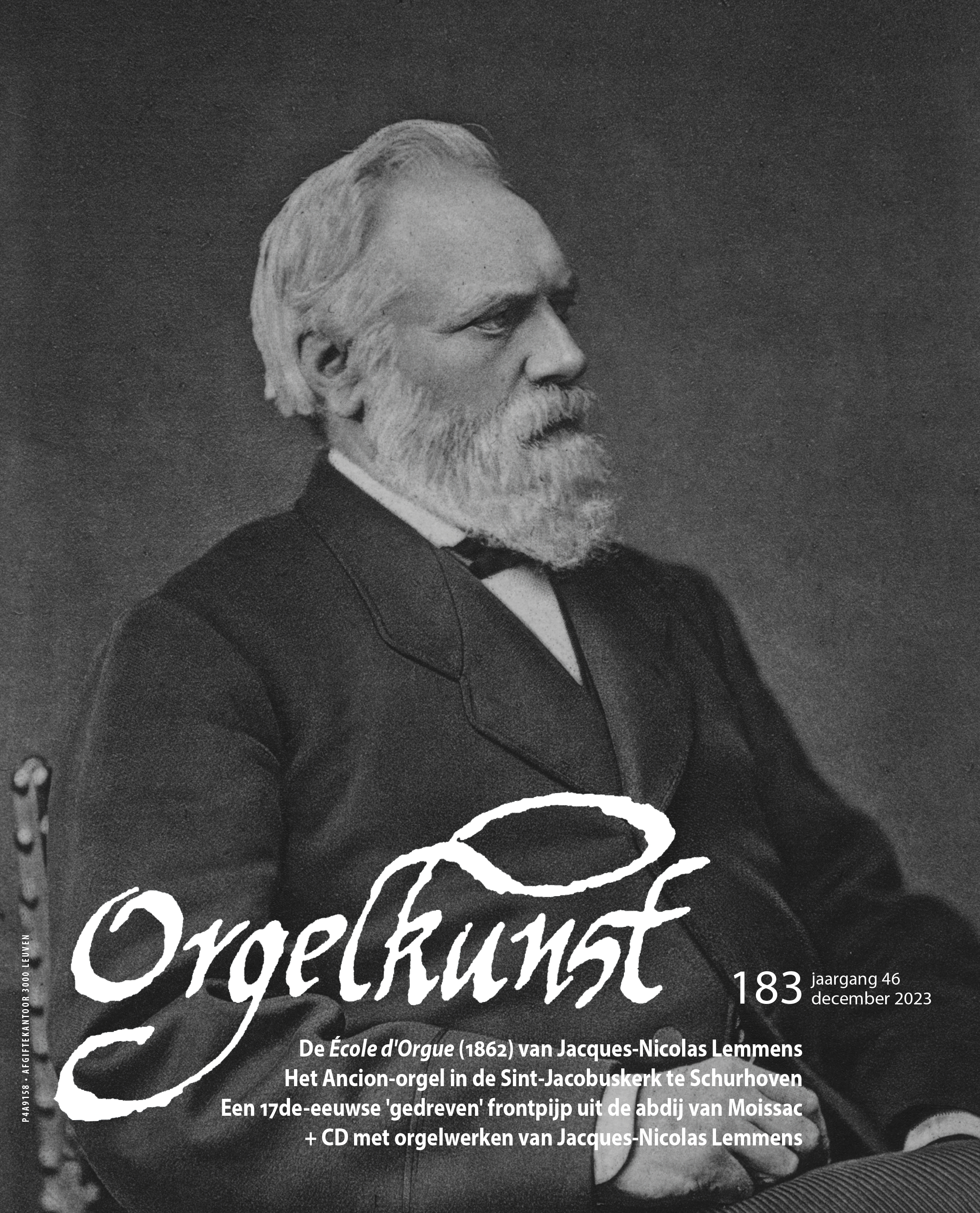
Separate issue
2023.04
Annelies Focquaert
De École d'Orgue van Jacques-Nicolas Lemmens (1862):
een Europese reis
Johan Zoutendijk
Het Ancion-orgel in de Sint-Jacobuskerk in Schurhoven (Sint-Truiden)
– geschiedenis, karakteristieken en restauratie
Edward Vanmarsenille
Een impressie bij de restauratie van het Ancion-orgel in Schurhoven
Wilfried Praet
Een 17de-eeuwse 'gedreven' frontpijp uit de abdij van Moissac,
in de collectie van het Muziekinstrumentenmuseum te Brussel
Toelichtingen bij Orgelkunst-cd 22: Orgelwerken van Jacques-Nicolas Lemmens (1823-1881)
Nieuwe uitgaven
Berichten
Concertagenda
Overzicht tijdschriften
inbegrepen CD: Jacques-Nicolas Lemmens: orgelwerken
Jacques Lemmens's École d'Orgue : A European Journey ?
On the occasion of the 200th anniversary of the birth of Jacques-Nicolas Lemmens (1823-1881), Annelies Focquaert has prepared an account of the origin of his famous organ method, the École d'Orgue. Based on her doctoral research, she outlines the history and European tour of this method, which, according to the title page, was Adoptée par les Conservatoires de Bruxelles, de Paris et de Madrid, par l'École de Musique Religieuse de Paris, les Écoles Normales, etc,' [adopted by the conservatories of Brussels, Paris, and Madrid, by the School of Religious Music in Paris, at the Écoles normales, etc.]. Between 1850 and 1852, Lemmens published in instalments a collection of religious organ and choral works of varying difficulty under the title Nouveau Journal d'Orgue, to which interested parties could subscribe. François-Joseph Fétis (1784-1871), director of the Brussels Conservatory, supported him in this publication-project in many ways, so much so that the journal Le Diapason sharply criticized it. The Nouveau Journal d'Orgue's reputation grew as it was adopted as a teaching method in various conservatories (Brussels, Paris, Madrid) and institutes (the École Niedermeyer in Paris, the normal schools in Belgium). Between 1852 and 1862 Lemmens revised most of the organ works from the Nouveau Journal d'Orgue into a more pedagogically structured whole and supplemented this with newly composed works in a more modern style. The Belgian state subsidized the expanded reissue, which appeared in 1862 under the title École d'Orgue, basée sur le plain-chant romain and became a great success in musical Europe.
Hitherto unexplored aspects of the history of the École d'Orgue include the question of how it was accepted by the Madrid conservatory, and a letter dated to 1870 from Stockholm in which Lemmens was elected (to his pleasant surprise) as a foreign member of the Swedish Royal Academy of Music. An examination of the travels and works of key figures such as the Spanish organist and director of the Madrid Conservatory Don Hilarión Eslava (1807-1878), organ builder Joseph Merklin (1819-1905), the ever-present Fétis, and the Swedish organ builder Per Larsson Åkerman (1826-1876), reveals the network that musically connected these figures and their works with Lemmens, and leads to the discovery that his method also played an important (but still to be investigated) role in the conservatory in Stockholm.
